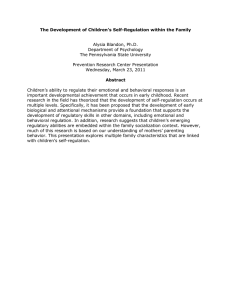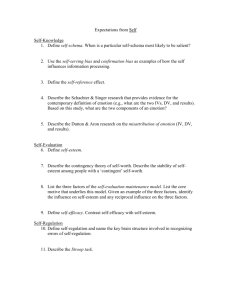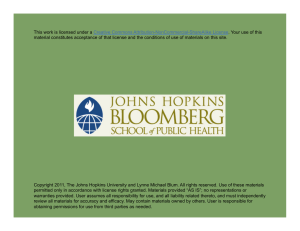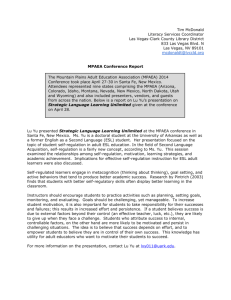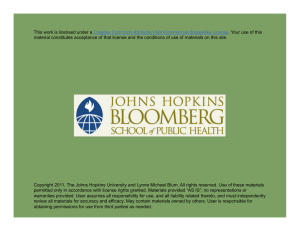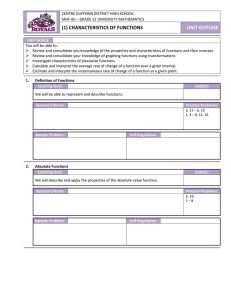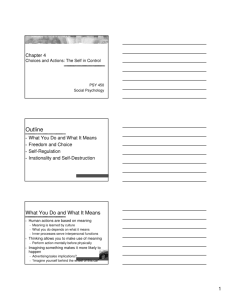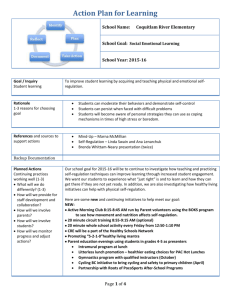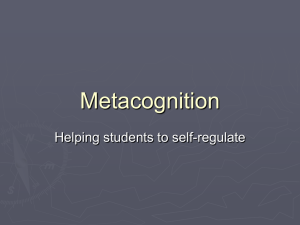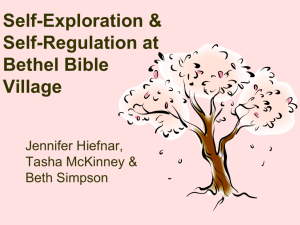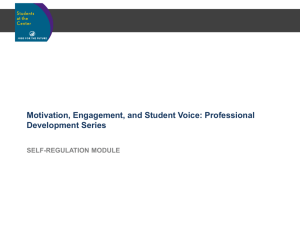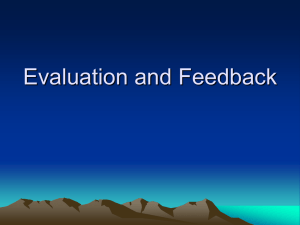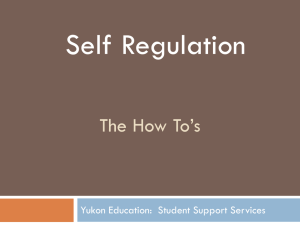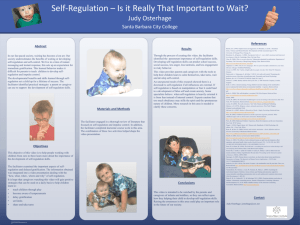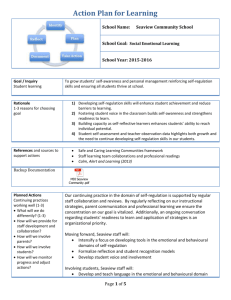Chapter 5
advertisement
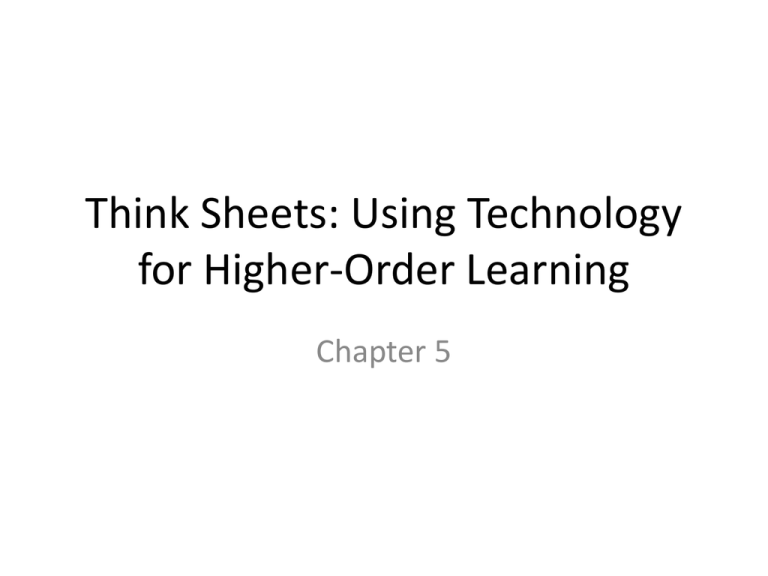
Think Sheets: Using Technology for Higher-Order Learning Chapter 5 Zimmerman’s Model of Self-Regulation • Self-Regulation is a proactive learning activity that students initiate to gain understanding. • Students who demonstrate selfregulation show motivation to complete a task using both behavioral and metacognitive stategies. Performance Control Use of mental imagery, reading, or listening Forethought Self-Reflection Planning and goal setting Judging what one knows and adapting Self-Regulation & NTeQ • While the NTeQ environment creates an authentic problem that can increase motivation, the students may still need help in developing and refining their reading, research, and questioning skills. Self-regulation provides us with a means for helping students develop these skills within the context of their problem. Our goal is to help each student develop the ability to read, develop questions and answer questions as they strive to gain understanding. Strategies for Self-Regulation • The goal with Think Sheets is to help the learner understand the content by using appropriate inquiry skills. • One approach to this is using Generative Strategies • When students use a generative strategy such as underlining or paraphrasing, they construct new ideas. Generative Strategies Approach • Recall- Helpful for learning facts and lists. • Integration- Useful for transforming information into a more easily remembered form. • Organization- Helps learner identify how new ideas relate to existing ideas. • Elaboration- Requires learner to add his/her ideas to the information to be learned. Three Types of Think Sheets • Planning Think Sheets- for use during student planning (use during the Specify Problem and Activities Before Computer Use sections). • Performance Think Sheets- created primarily for the Activities During Computer Use, Activities After Computer Use, and Supporting Activities. • Self Reflection Think Sheets- Not test, but they encourage the learner to do a self-evaluation such as asking whether they have met their goals or achieved the standard. NTeQ Problem-Solving Process Aligned with Bloom’s Taxonomy Component Bloom’s Level Student Action Define the problem Comprehension & analysis Write a statement that clearly defines the problem. Identify what is known about the problem Analysis Ideas are stated as ‘known’ information Identify what needs to be known to solve the problem Analysis List as questions Identify data that need to be collected to solve the problem Analysis Write as action statements and indicate how to collect Determine how the data needs to be manipulated to solve the problem Application Synthesis Analysis Describe how the data will be manipulated to develop a solution Generate possible solutions Synthesis Base solutions on results of the data manipulation Determine how to evaluate each solution Evaluation Identify criteria that will be used to select the best solution Select the best solution Analysis Evaluation Consider each alternative and identify the implications of each Present Findings Synthesis Publish the results
